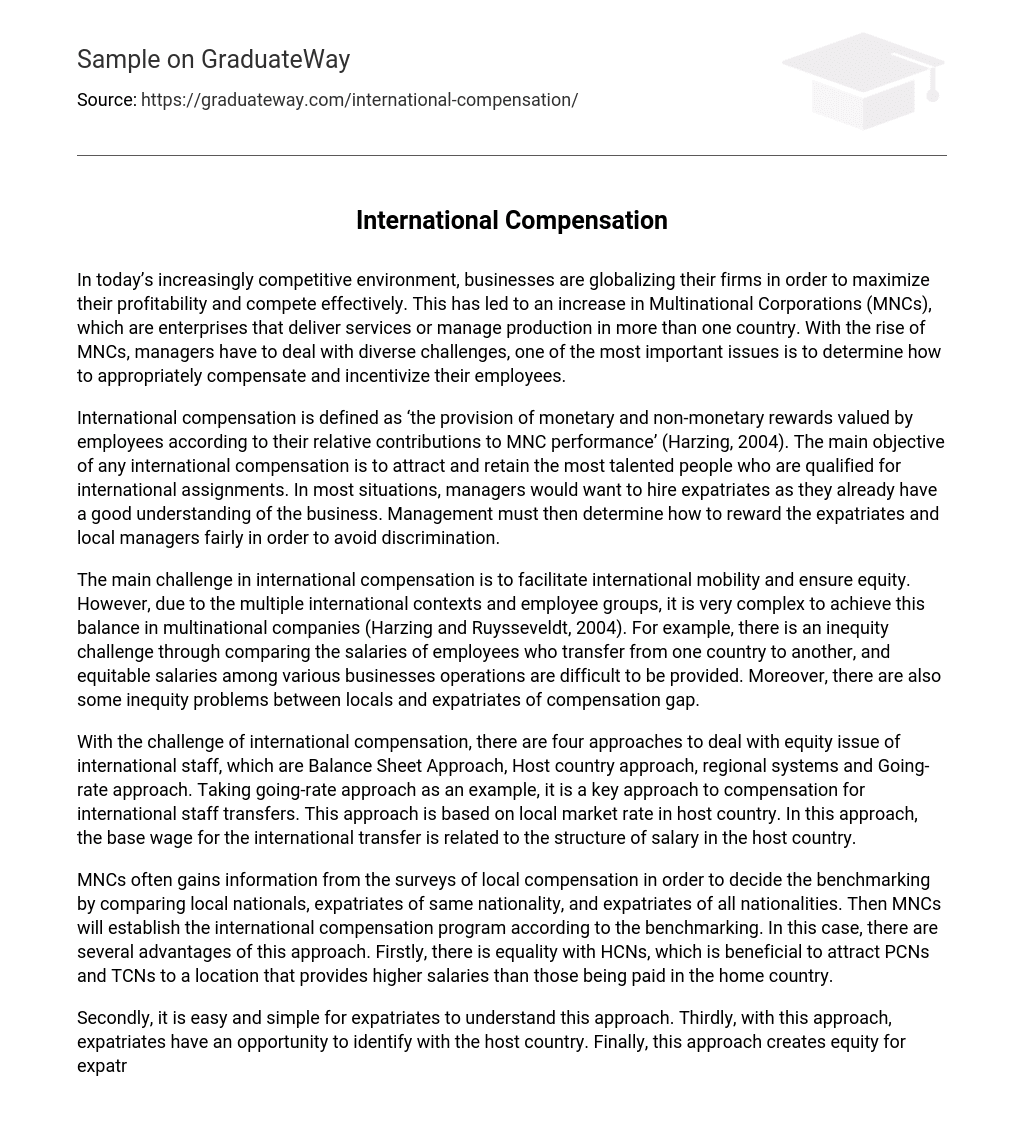Today, businesses are globalizing to maximize profitability and compete effectively in a competitive environment. As a result, Multinational Corporations (MNCs) have increased. MNCs are enterprises that operate in multiple countries, delivering services or managing production. The rise of MNCs has brought forth diverse challenges for managers. Among these challenges, determining the appropriate compensation and incentives for employees is a crucial issue.
International compensation, as defined by Harzing (2004), refers to the offering of both monetary and non-monetary rewards to employees based on their contributions to the performance of multinational corporations (MNCs). The primary goal of international compensation is to attract and retain highly skilled individuals who are suitable for international assignments. Employing expatriates is often preferred by managers due to their already established knowledge of the business. Consequently, fair rewards for expatriates and local managers must be determined by management to prevent discrimination.
The primary difficulty in international compensation is promoting international mobility and ensuring fairness. Nonetheless, achieving this balance in multinational companies is highly complex due to the diverse international contexts and employee groups (Harzing and Ruysseveldt, 2004). An instance of the challenge is the inequitable comparison of salaries for employees transferring between countries. Additionally, it is challenging to establish equitable salaries across different business operations. Furthermore, there are also disparities in compensation between local employees and expatriates.
There are four approaches to address the equity issue of international staff compensation: the Balance Sheet Approach, Host Country Approach, Regional Systems, and the Going-Rate Approach. The Going-Rate Approach, as an example, is a significant method for compensating international staff transfers. It utilizes the local market rate in the host country as a basis for determining the international transfer’s base wage, which is aligned with the host country’s salary structure.
MNCs commonly utilize local compensation surveys to gather information for benchmarking purposes. This involves comparing the compensations of local nationals, expatriates of the same nationality, and expatriates of all nationalities. Subsequently, MNCs create international compensation programs based on this benchmarking data. This approach offers several advantages. Firstly, it ensures parity with host country nationals (HCNs), which helps in attracting parent country nationals (PCNs) and third country nationals (TCNs) to locations where higher salaries are offered compared to their home countries.
In addition, expatriates find this approach easy to understand and simple. They also have the chance to connect with the host country, and it promotes fairness among expatriates from various nations. Additionally, performance management plays a crucial role in motivating employees. It emphasizes the rewarding of employees based on performance evaluations (Harzing and Ruysseveldt, 2004). Lastly, there are several primary steps involved in performance management.
To begin, it is necessary to connect individual and unit performance to the strategy of the multinational company. This will establish the crucial connection between employee performance and the achievement of strategic objectives (Harzing and Ruysseveldt, 2004). Moreover, multinational companies should establish specific performance goals for individuals. The theories of Expectancy and Goal Setting are crucial in understanding performance management from an organizational behaviour perspective.
The expectancy theory emphasizes how employees adjust their work performance to achieve anticipated satisfaction with valued goals. In contrast, the goal setting theory emphasizes the significance of objectives in enhancing employee performance. For example, challenging goals can motivate employees to put forth maximum effort in their work, resulting in improved organizational performance. However, multinational companies may implement goal setting differently due to cultural and country differences.





